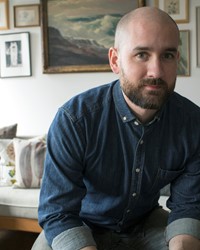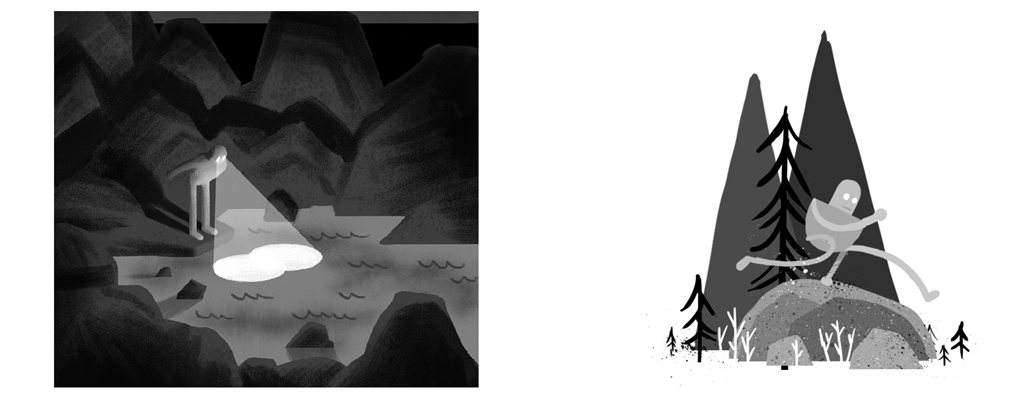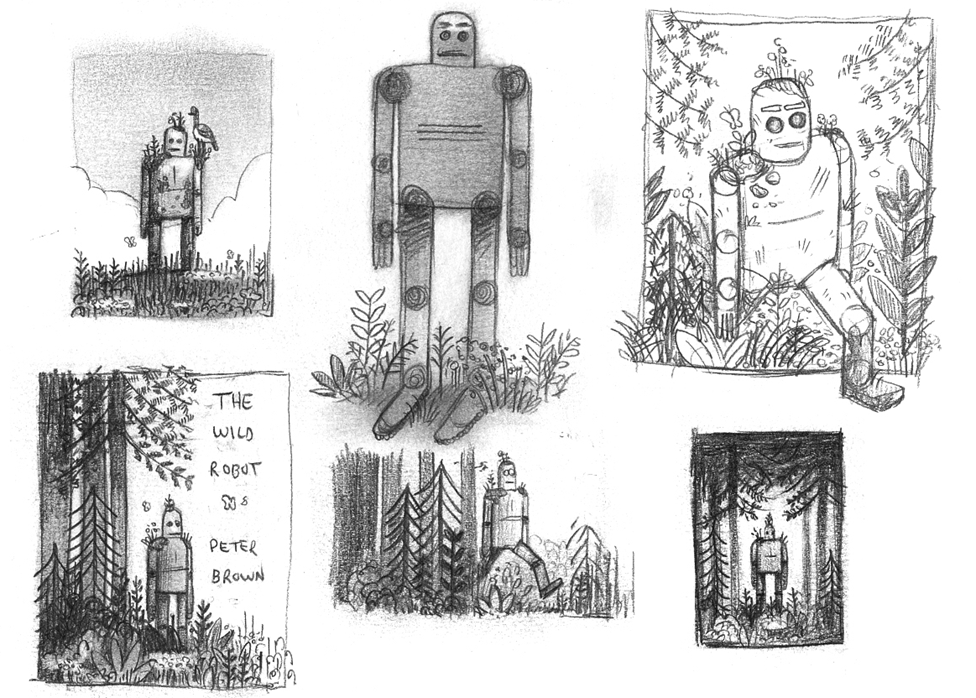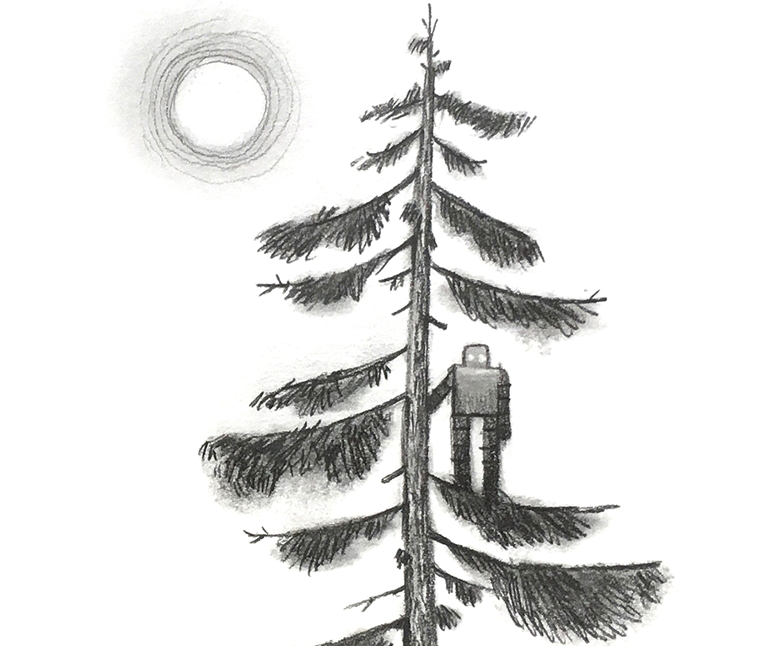Peter Brown


About Author
Peter has always loved telling stories and grew up telling stories by drawing characters and scenes from his imagination. As a teenager, he began telling his tales with words. He studied illustration at Art Center College of Design, including courses on children's books.
He moved to New York City and was working on animated TV shows when he signed a book deal for his first picture book, Flight of the Dodo. Since then his books for children have included bestsellers The Wild Robot, The Curious Garden, Children Make Terrible Pets and Mr Tiger Goes Wild. He now lives in Philadelphia, Pennsylvania.
Find Peter on Twitter @itspeterbrown; and on his website.
Interview
The Wild Robot Protects
October 2023
Loved in classrooms and homes, Peter Brown's The Wild Robot series, about a robot trying to find her place in the world, has helped inspire creative work in classrooms and prompted discussions about the environment and our place as protectors of our wild spaces.
In this Q&A with Peter Brown, find out about the Wild Robot's latest adventure, The Wild Robot Protects, which sees robot Roz undertaking a huge quest to help save the environment and creatures in her care from a man-made catastrophe.

The Wild Robot The Wild Robot Escapes The Wild Robot Protects
Q&A with Peter Brown
"Roz leads by example. If she were real, she'd be organizing armies of animals to clean up our waterways and to reforest barren lands and to get endangered species out of harm's way. But in reality, it's up to us to protect ourselves and our planet."
1. Hello Peter, and thank you for joining us on ReadingZone. You are well known as a picture book creator so can you tell us what drew you to write The Wild Robot, an illustrated book for children?
I come up with all kinds of story ideas. Most of my ideas turn into picture books, but every now and then I'll have an idea that works better in a different format. In my research for The Wild Robot, I was learning so many fascinating things and finding so many surprising connections between nature and technology and humanity, that I realized the story was too big for a picture book. It needed to be a children's novel, so that's what I made.
2. What happens in three Wild Robot's adventures, and how does the most recent, The Wild Robot Protects, follow through those earlier stories?
In The Wild Robot, we follow Roz the robot as she learns to survive in an island wilderness and gradually becomes part of the community of creatures. In The Wild Robot Escapes, we see how Roz survives in civilization as she tries to get back to her home on the island. Now, in The Wild Robot Protects, Roz goes to extraordinary lengths to protect her home island from a mysterious form of pollution which the animals call the poison tide. Each of the books explores themes of nature and technology and family and survival, and we see how Roz is caught between the world of humans and the world of animals.
3. What draws you back as a writer and illustrator to the world of the Wild Robot?
The Wild Robot stories allow me to use words and pictures to explore countless fascinating subjects. There are scenes of action and adventure balanced with quiet, thoughtful scenes. I particularly enjoy the challenge of writing about difficult subjects, such as death and family separation, which I try to handle with great care so that they're appropriate for readers of all ages. These stories are very challenging to create, but the satisfaction I feel when the various threads of a story come together makes it all worthwhile.

"There are scenes of action and adventure balanced with quiet, thoughtful scenes."
4. Can you tell us how the narrative style of these books developed - the text and dialogue is pared back, and yet delivers a powerful, layered story.
I spent ten years writing and illustrating picture books before attempting my first novel for kids. Honestly, I was daunted by the thought of writing a novel. However, I knew I could write a chapter, especially a short chapter, so I just focused on writing one short chapter at a time. I treat each chapter almost like it's the text of a picture book, where every word, every syllable, is important. My goal for each chapter is to get right to the point, without any extraneous details. This approach helps me keep the story moving along at a nice pace, and my use of simple language means that readers of all ages can become invested in the story and characters. My writing style seems to work out well for both me and my readers.
6. Was the idea of a 'poison tide' in The Wild Robot Protects taken from a specific real life event / environmental issue? How do you use it in the book to show the interconnectedness of all life?
The poison tide is a mysterious form of pollution that I invented for this story. For the story to work, the poison tide needed very specific qualities. It needed to travel long distances on ocean currents, much like an oil spill. It needed to be a fine powder, much like the dust that might billow away from a coal mine. And that powder needed to be toxic, much like the runoff from mining sites that extract rare earth metals.
Once I got to know the poison tide, I began to imagine how it would affect the environment in both predictable and unpredictable ways. Roz and the animals watch as their island quickly deteriorates, and we're reminded that the sea and the land and the sky are all closely connected.
7. How did you decide what Roz, the Wild Robot, would look like, and the illustration style for these books?
Robots can look like anything. Roz could have looked more like a dog or a spider or a helicopter. I'm perfectly capable of designing a complex robot character, but I wanted Roz to have a simple, familiar design, so that when readers see the book cover they immediately know that this is a story about a robot who is out of place. Then, throughout the course of the stories, I methodically show readers just how special Roz really is. Plus, by giving Roz a simple humanoid appearance, with arms and legs and a body and a head, readers can more easily relate to Roz.
I applied the same illustration style of the Wild Robot books to my picture books such as Mr. Tiger Goes Wild and My Teacher is a Monster, but with a little more subtlety. I give readers just enough visual information to spark their interest, while leaving plenty of room for them to use their own imaginations.

"I wanted Roz to have a simple, familiar design, so that when readers see the book cover they immediately know that this is a story about a robot who is out of place."
8. Have you been surprised at all at how popular The Wild Robot has become in classrooms? Have any specific examples of class work or projects on The Wild Robot particularly impressed you?
My mother was a teacher, and many of my friends are teachers and librarians, and I know just how creative educators can be. I'm constantly impressed by the ways educators incorporate The Wild Robot into their classrooms, but educators are always doing impressive things.
While visiting schools I've seen incredible Wild Robot murals and sculptures, I've seen how kids have use simple circuitry to make Roz art with glowing eyes, I've seen countless Roz costumes and figurines. I especially love it when classes take their Wild Robot lessons outside, perhaps to experiment with camouflage or to build their own shelter modeled after Roz and Brightbill's home. Educators keep coming up with new and inspiring ways to weave the Wild Robot books into their lessons. It's really remarkable.
9. Do you have any more Wild Robot books planned?
I'm kicking around a few ideas for more Wild Robot books, but it's too soon to discuss, at the moment. I'll just say that you haven't seen the last of Roz.
10. What are your own hopes for the planet currently? If Roz was with us in the 'real' world, how would she help us to change it?
Roz leads by example. If she were real, she'd be organizing armies of animals to clean up our waterways and to reforest barren lands and to get endangered species out of harm's way. But in reality, it's up to us to protect ourselves and our planet.
These problems are too big for us to solve as individuals. It's going to take the combined effort of the world's nations to make any real difference. There's a lot of work to do, but we can turn things around, and I'm optimistic that today's young people will be the ones to finally get it done. I fully expect that robots will be part of the solution.

 The Wild Robot Protects (The Wild Robot 3)
The Wild Robot Protects (The Wild Robot 3)
 Fred Gets Dressed
Fred Gets Dressed
 The Wild Robot Escapes (The Wild Robot 2)
The Wild Robot Escapes (The Wild Robot 2)
 The Wild Robot
The Wild Robot
